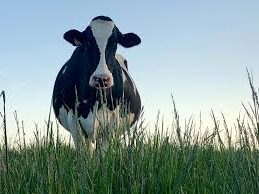
~ Press release issued by the Virginia Farm Bureau Federation
WASHINGTON — Why is beef top dollar in grocery stores, but cattle producers aren’t fetching higher prices for their product?
The U.S. Department of Agriculture wants to know — and so do cattlemen.
“There’s little doubt that something is wrong when consumers are paying higher prices for meat and at the same time America’s farmers and ranchers are being paid less,” said American Farm Bureau Federation President Zippy Duvall.
The Packers and Stockyards Act protects the public in times of crisis from price manipulation, collusion, restrictions of competition or other unfair practices. While an investigation into possible violations is ongoing, a report by the USDA’s Agricultural Marketing Service tied cattle market disruptions to two major events: the COVID-19 pandemic and a fire at the Tyson Fresh Meats beef packing plant in Kansas.
The report shows the price imbalance is directly related to the Tyson fire and pandemic, but does not preclude the possibility that the Packers and Stockyards Act was violated in the midst of the fire and the pandemic.
“We are pleased the USDA responded to our call for an investigation, but it’s important to note the scrutiny of the markets is not concluded,” Duvall said.
Tony Banks, senior assistant director of agriculture, development and innovation for Virginia Farm Bureau Federation, said Virginia’s cattle producers feel they are not getting paid what they invested in their animals.
“Yet retail prices are through the roof, and there were times you couldn’t find certain types of meat on grocery shelves because of the market disruptions,” Banks said.
The USDA report said the Tyson plant that burned in August 2019 accounted for up to 6% of the nation’s beef-processing capacity. The fire coincided with the seasonal increase in beef demand ahead of the Labor Day holiday weekend.
Futures and market prices for slaughter-ready cattle decreased significantly in the days after the fire, while packers increased their processing volume primarily through the addition of Saturday slaughter shifts. These factors and others contributed to unstable market conditions last year.
Then came a global pandemic. Market reactions in March were characterized by sudden changes in beef demand, with customers stocking up on fresh beef at grocery stores, while food-service demand simultaneously declined. Values increased for packaged beef, and cattle prices were volatile as packers operated at near-full capacity, the report found.
Then, major beef-supply disruptions occurred as large numbers of plant workers contracted COVID-19. Plant closures and slowdowns negatively impacted beef production as retail surged—likely a reaction to the possibility of beef shortages in grocery stores.
RELATED ARTICLES
Livestock farmers may benefit from proposed processing legislation
Livestock farmers warned to brace for hard times ahead



Be the first to comment